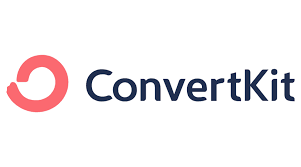Welcome to the ultimate showdown in email marketing tools for 2024: ActiveCampaign versus ConvertKit. If you’re here, it’s probably because you’re wondering which of these powerful tools is the best fit for your business. You’re in the right place! Let’s dive right in and compare these two giants in a way that’s easy to understand and totally actionable.
| ActiveCampaign | ConvertKit |
|---|---|
 |  |
| G2 Score – 4.5 out of 5 stars | G2 Score – 4.4 out of 5 stars |
| TrustRadius Score – 8.0 out of 10 | TrustRadius Score – 8.8 out of 10 |
Ease of Use: Getting Comfortable with Your Tools
ActiveCampaign: A Closer Look
When it comes to ease of use, ActiveCampaign is a bit like a Swiss Army knife – packed with features, but can take a bit of time to master. It offers a wealth of automation options, integrations, and tracking capabilities. However, this abundance of features can be a bit overwhelming for beginners. ActiveCampaign’s dashboard is comprehensive. It gives you a quick overview of your campaigns, contacts, and performance metrics. But, with so many options available, it’s easy to feel lost initially. Thankfully, there’s a robust support system including tutorials and a community forum to help you navigate through its rich features.
Creating an email campaign in ActiveCampaign involves several steps. You start by selecting your audience, then move on to designing your email. The drag-and-drop email builder is a highlight – it’s intuitive and offers a variety of templates and customization options. Where ActiveCampaign truly shines is in its automation capabilities. It allows you to set up complex workflows based on subscriber actions. This level of automation can be incredibly powerful for segmenting your audience and delivering personalized content. However, setting up these automations requires a bit of a learning curve.
ConvertKit: Simplicity Meets Efficiency
ConvertKit, on the other hand, prides itself on its simplicity and user-friendliness, making it a favorite for content creators and small business owners. It’s designed to do what you need without the fuss. ConvertKit’s interface is clean and minimalistic. The dashboard focuses on the essentials – your subscriber list, recent emails, and performance stats. This streamlined approach makes it easy for beginners to get started without feeling overwhelmed.
Creating an email in ConvertKit is straightforward. You pick your audience, craft your message, and hit send. The email editor is less feature-rich than ActiveCampaign’s but is incredibly user-friendly. It’s perfect for those who prefer simplicity over extensive customization. ConvertKit also offers automation, but it’s much simpler compared to ActiveCampaign. You can create basic sequences and triggers, which is often enough for small businesses and individual creators. While it lacks the advanced capabilities of ActiveCampaign, it’s a lot easier to get to grips with.
Which Is Easier to Use?
If you’re a beginner or a small business owner who values simplicity and quick setup, ConvertKit is your go-to tool. Its user-friendly interface and straightforward campaign creation process make it easy to get your email marketing off the ground.
On the other hand, if you require detailed tracking, advanced automation, and don’t mind a steeper learning curve, ActiveCampaign is the powerhouse you need. It’s ideal for businesses looking to scale their email marketing efforts with sophisticated strategies. Whichever you choose, remember that the best tool is the one that fits your needs and helps you connect effectively with your audience.
Deliverability: Ensuring Your Messages Reach the Inbox
ActiveCampaign: Maximizing Your Reach
In the world of email marketing, deliverability is king. After all, what good is a well-crafted email if it never reaches your audience’s inbox? ActiveCampaign understands this and has put considerable effort into ensuring high deliverability rates. ActiveCampaign offers several tools to improve deliverability. These include spam testing, which helps you identify and fix issues that might send your emails to the spam folder. Additionally, they provide detailed reports that let you track your delivery rates, open rates, and more.
One of the standout features in ActiveCampaign is the ability to use a custom domain for sending emails. This not only enhances your brand’s professionalism but also improves deliverability. Furthermore, ActiveCampaign supports advanced email authentication methods like DKIM and SPF, which are crucial for ensuring your emails are trusted by email servers.
ConvertKit: Keeping It Simple and Effective
ConvertKit may not offer as many advanced features as ActiveCampaign, but it still holds its own in the deliverability department. It focuses on the basics, doing them well to ensure your emails land where they should. ConvertKit keeps deliverability tools simple. It offers basic spam checks and straightforward analytics to track your email performance. While it may not have the bells and whistles of ActiveCampaign, its simplicity ensures that you focus on creating great content, which is a key factor in deliverability.
ConvertKit strongly advocates for high-quality, engaging content as a means to improve deliverability. They believe that when your subscribers consistently engage with your emails, it signals email providers that your messages are valuable, thus improving your inbox placement.
Comparing the Two
So, who wins the deliverability battle? If you’re looking for advanced features and tools to actively manage and improve your email deliverability, ActiveCampaign is the better choice. Its array of tools and options gives you more control over your email’s journey to the inbox.
On the other hand, if you prefer a more hands-off approach and want a tool that does the basics well without much fuss, ConvertKit will serve you well. Its emphasis on content quality and a simplified approach means you can focus more on what you’re sending than how it’s being sent. Both platforms have robust infrastructures to ensure good deliverability rates, but your choice will depend on how much control and detail you want over this aspect of your email marketing.
Automation Capabilities: Streamlining Your Email Marketing
ActiveCampaign: The Powerhouse of Automation
ActiveCampaign is widely acclaimed for its sophisticated automation capabilities, making it a favorite among businesses looking for deep customization and detailed segmentation strategies. With ActiveCampaign, you can create highly intricate automation workflows. These can be based on various triggers, such as subscriber behavior, email interactions, website activity, and more. You can set up sequences that respond to how your subscribers interact with your emails, offering a highly personalized experience.
ActiveCampaign’s CRM integration takes automation to another level. You can automate not just your emails, but your entire sales process. This feature allows you to track customer interactions and automate tasks like follow-ups, task assignments, and sales pipelines, seamlessly blending your email marketing with your sales strategy. Another unique feature is the ability to perform A/B testing within your automation sequences. This means you can test different versions of your emails at different stages of the automation sequence, continually optimizing your strategy for the best results.
ConvertKit: Simplicity in Automation
ConvertKit’s approach to automation is much simpler, but still very effective, especially for those who are new to email marketing or have more straightforward needs. ConvertKit offers an intuitive visual automation builder that makes it easy to set up basic automation workflows. You can create sequences based on subscriber actions like signing up for a list or clicking a link in an email. The process is straightforward and user-friendly, making it accessible even to those without technical expertise.
ConvertKit’s automation tools are tailored towards content creators and bloggers. They offer automation features that are particularly useful for this audience, such as RSS feed integrations for sending out blog updates and sequences for drip content delivery. While ConvertKit lacks the advanced features of ActiveCampaign, this simplicity can be a benefit. It allows you to focus more on creating and delivering great content rather than getting bogged down in complex automation sequences.
Weighing Your Options
In the battle of automation capabilities, your choice depends largely on your business needs and technical comfort level. If you need highly customized, intricate automation workflows and are comfortable with a steeper learning curve, ActiveCampaign is your go-to tool. Its vast array of features and integrations offers unparalleled control and customization.
Conversely, if you prefer simplicity, ease of use, and have straightforward automation needs, ConvertKit will not disappoint. It’s ideal for bloggers, content creators, and small businesses who want effective automation without complexity. Both platforms offer powerful ways to automate your email marketing, but the right choice depends on how much complexity and customization you need in your automation strategies.
Pricing and Plans: Balancing Cost and Features
| ActiveCampaign | Lite Plan: Starting at $15/month (for up to 500 contacts), offering basic email marketing, marketing automation, and a customer CRM. Plus Plan: Starting at $70/month, with additional features like landing pages, Facebook Custom Audiences integration, and lead scoring. Professional Plan: Starting at $159/month, including site messaging, attribution, and predictive sending. Enterprise Plan: Custom pricing, offering custom reporting, custom mailserver domain, and dedicated account rep. |
| ConvertKit | Free Plan: Offers basic features for up to 1,000 subscribers, including email broadcasts, landing pages, and forms. Creator Plan: Starting at $29/month for up to 1,000 subscribers, including automation and third-party integrations. The price increases with more subscribers. Creator Pro Plan: Starting at $59/month for up to 1,000 subscribers, adding advanced features like newsletter referral system, subscriber scoring, and advanced reporting. |
ActiveCampaign: Flexible Pricing for Growing Businesses
ActiveCampaign’s pricing structure is designed to scale with your business, making it a viable option for a wide range of users, from small startups to large enterprises. ActiveCampaign offers a tiered pricing model, which includes Lite, Plus, Professional, and Enterprise plans. Each tier offers progressively more features, allowing you to choose a plan that fits both your needs and your budget. As your subscriber list grows and your needs become more complex, you can move up to a higher tier.
While ActiveCampaign can be on the pricier side, especially as you climb up the tiers, the range of features you get is extensive. The higher-tier plans offer advanced features like CRM integration, lead scoring, and custom reporting, which can be invaluable for larger businesses or those with complex sales processes. ActiveCampaign offers a free trial, allowing you to test the platform before committing. For larger businesses, they provide custom quotes, ensuring you get a plan tailored to your specific needs.
ConvertKit: Straightforward Pricing for Creators
ConvertKit’s pricing is straightforward and transparent, aimed at content creators and small business owners who need a reliable email marketing solution without the complexities of more advanced platforms. ConvertKit offers a free plan and two paid tiers: Creator and Creator Pro. The free plan is quite generous, allowing you to build an email list and access basic features. The paid plans add more advanced features like automation and premium support.
ConvertKit’s pricing is generally more affordable than ActiveCampaign’s, especially for the lower tiers. The focus is on providing value for money, offering the essential features needed by content creators and small businesses without overloading them with advanced tools they might not use. ConvertKit is known for its transparent pricing. There are no hidden fees, and you get a clear understanding of what you’re paying for. This straightforward approach makes it easier for smaller businesses and individual creators to budget for their email marketing needs.
Making the Right Choice
When it comes to choosing between ActiveCampaign and ConvertKit based on pricing, it largely depends on your budget and the specific features you need. If you’re a small business or a content creator looking for a straightforward, affordable solution, ConvertKit is an excellent choice. It offers the essentials without overwhelming you with features you might not use.
However, if you’re a larger business or have more sophisticated marketing needs, the investment in ActiveCampaign could be well worth it. Its advanced features and scalability make it a powerful tool for businesses looking to implement comprehensive email marketing strategies. In summary, consider your current needs, growth potential, and budget when deciding which platform offers the best value for your investment.

Related: Check out our free SEO suite

Customer Support and Resources: Navigating the Journey
ActiveCampaign: Comprehensive Support for Complex Needs
ActiveCampaign recognizes that its comprehensive feature set can come with a learning curve. Therefore, they offer a robust support system to ensure users can make the most out of their platform. ActiveCampaign provides a vast knowledge base, including articles, guides, and video tutorials. This resource is invaluable for both beginners and advanced users, offering insights into every aspect of the platform.
Users of ActiveCampaign can access support through various channels, including email, live chat, and even phone support for higher-tier plans. The response is generally quick and helpful, with a focus on resolving issues and guiding users through complex features. ActiveCampaign also boasts a vibrant community where users can share tips and strategies. Additionally, they offer training sessions and webinars, which are fantastic for users looking to deepen their understanding of email marketing and the platform.
ConvertKit: Streamlined Support for Ease of Use
ConvertKit, with its focus on simplicity and user-friendliness, extends these principles to its customer support as well. ConvertKit offers a comprehensive help center with articles and tutorials tailored to the needs of content creators and small businesses. The resources are easy to understand and provide actionable advice.
ConvertKit’s support team is known for being responsive and personable. They offer email support across all plans, and live chat support is available for higher-tier plans. The support team is praised for their approachable and helpful nature, making it easier for users to get the assistance they need. ConvertKit has a strong community focus, with an emphasis on supporting content creators. They offer regular workshops and webinars, providing users with opportunities to learn and grow their email marketing skills.
Support: A Critical Factor
In choosing between ActiveCampaign and ConvertKit, consider the level of support you anticipate needing. If you are likely to engage with more complex features and require a broader range of resources, ActiveCampaign’s comprehensive support system will be more beneficial.
On the other hand, if you prefer a platform that’s easier to navigate with a support team that feels more like a community, ConvertKit is the way to go. Its resources are more focused, and the support is highly approachable, making it ideal for smaller businesses and individual creators. Ultimately, both platforms offer excellent customer support, but the best choice depends on your specific needs and the complexity of the email marketing strategies you plan to implement.
Integration Capabilities: Connecting Your Marketing Ecosystem
ActiveCampaign: A Hub for Integrations
ActiveCampaign stands out with its extensive integration capabilities, making it a central hub for your entire marketing and sales ecosystem. ActiveCampaign integrates with over 850 apps and services. This includes popular CRM systems, social media platforms, eCommerce solutions, and productivity tools. This extensive range allows businesses to seamlessly connect their email marketing efforts with other aspects of their digital strategy.
For businesses with specific needs, ActiveCampaign offers the ability to create custom integrations. This is particularly useful for larger enterprises or businesses with specialized software needs. ActiveCampaign provides API access, especially useful for businesses with in-house development resources. This allows for the creation of highly customized integrations and automations, further enhancing the platform’s flexibility.
ConvertKit: Focused and Efficient Integrations
ConvertKit, while not offering as many integrations as ActiveCampaign, focuses on providing integrations that are most beneficial to its core user base of content creators and small businesses. ConvertKit offers integrations with essential tools for content creators, such as WordPress, Shopify, and Patreon. These integrations are streamlined and focused, providing the functionality that creators and small businesses need without unnecessary complexity.
The integrations in ConvertKit are designed to be user-friendly and easy to set up. This approach aligns with their overall philosophy of simplicity and ease of use, ensuring users can connect their favorite tools without technical hassle. For additional integration needs, ConvertKit integrates with Zapier, which connects to hundreds of other apps. This extends ConvertKit’s integration capabilities significantly, making it a versatile choice even with a smaller direct integration library.
Evaluating Integration Needs
The choice between ActiveCampaign and ConvertKit in terms of integration depends on the complexity and breadth of the tools you use in your business. If you require a wide range of integrations and have the need for custom or advanced integrations, ActiveCampaign is likely the better choice. Its extensive library and API access cater to complex and varied needs, especially suitable for larger businesses or those with a diverse set of tools.
Conversely, if your integration needs are more focused and you value simplicity and ease of setup, ConvertKit’s streamlined integration approach will serve you well. It covers the essentials for content creators and small businesses, ensuring you can connect your key tools without unnecessary complexity. Consider your current and future integration needs and the level of complexity you’re comfortable managing when deciding which platform offers the best integration capabilities for your business.
Reporting and Analytics: Measuring Success
ActiveCampaign: In-Depth Insights for Data-Driven Decisions
ActiveCampaign offers comprehensive reporting and analytics features, allowing businesses to dive deep into their email marketing performance. With ActiveCampaign, you get access to a range of detailed reports. These include campaign performance, contact trends, automation reports, and more. The platform provides granular insights into how your emails are performing, who is engaging with them, and what actions your contacts are taking.
For businesses with specific reporting needs, ActiveCampaign offers custom reporting options, particularly in its higher-tier plans. This allows for more tailored insights, aligning with specific business goals and KPIs. ActiveCampaign goes beyond basic open and click rates. It provides advanced metrics like geo-tracking, click maps, and ecommerce data, offering a more comprehensive view of your email marketing impact.
ConvertKit: Streamlined Analytics for Creators
ConvertKit’s approach to reporting and analytics is more streamlined, focusing on the key metrics that matter most to content creators and small businesses. ConvertKit provides clear, easy-to-understand reports on the basics: open rates, click rates, subscriber growth, and more. These metrics give a clear overview of your email performance without overwhelming you with data.
ConvertKit’s reporting is visually appealing and intuitive. The platform offers a dashboard that provides a quick snapshot of your email marketing health, making it easy to assess performance at a glance. ConvertKit places a strong emphasis on tracking subscriber growth and engagement, crucial for content creators and bloggers. The platform provides insights into how your audience is growing and how engaged they are with your content.
Making Sense of the Data
When it comes to reporting and analytics, your choice between ActiveCampaign and ConvertKit should be based on the level of detail you need in your data analysis. ActiveCampaign is ideal for businesses that require in-depth analytics and custom reporting. Its advanced metrics and detailed reports provide deep insights into every aspect of your email marketing, making it suitable for data-driven businesses and those with complex sales processes.
On the other hand, if you prefer a more straightforward approach to analytics, with clear, easy-to-understand metrics and visual reporting, ConvertKit is a great choice. It provides the essential data needed by content creators and small businesses, allowing them to track their growth and engagement without getting lost in overly complex data. Consider how important detailed analytics are to your business and how you intend to use data to inform your email marketing strategies when choosing between these two platforms.
Conclusion:
As we wrap up our comprehensive comparison of ActiveCampaign and ConvertKit, it’s clear that both platforms offer exceptional features for email marketing, but they cater to different needs and preferences.ActiveCampaign stands out as a robust and feature-rich option, perfect for businesses seeking advanced automation, detailed reporting, and extensive integration capabilities. Its depth in features and customization makes it a go-to choice for larger businesses or those with complex marketing and sales processes.
On the other hand, ConvertKit shines with its simplicity, ease of use, and focus on content creators. Its streamlined approach to email marketing, with essential features and user-friendly interfaces, makes it ideal for bloggers, small businesses, and creators who need an effective, straightforward tool. Your decision between ActiveCampaign and ConvertKit should be influenced by your business size, technical expertise, specific needs, and growth plans. Consider what aspects of email marketing are most important to you: Is it the depth and customization of features, or the simplicity and ease of use? Do you need a tool that integrates seamlessly with a wide range of other apps, or are you looking for something that covers the essentials well?
Both ActiveCampaign and ConvertKit are top contenders in the email marketing space for 2024. By assessing your specific needs and goals, you can make an informed decision that aligns with your business strategy and helps you connect with your audience more effectively. Remember, the best email marketing tool is the one that fits seamlessly into your workflow, supports your growth, and helps you build meaningful relationships with your audience.
Read Next
- GetResponse vs ReachMail: The Best Email Marketing Tool for 2024
- GetResponse vs EmailOctopus: The Best Email Marketing Tool for 2024
- GetResponse vs SalesHandy: The Best Email Marketing Tool for 2024
- GetResponse vs Campaigner: The Best Email Marketing Tool for 2024
- GetResponse vs Stripo: The Best Email Marketing Tool for 2024





















